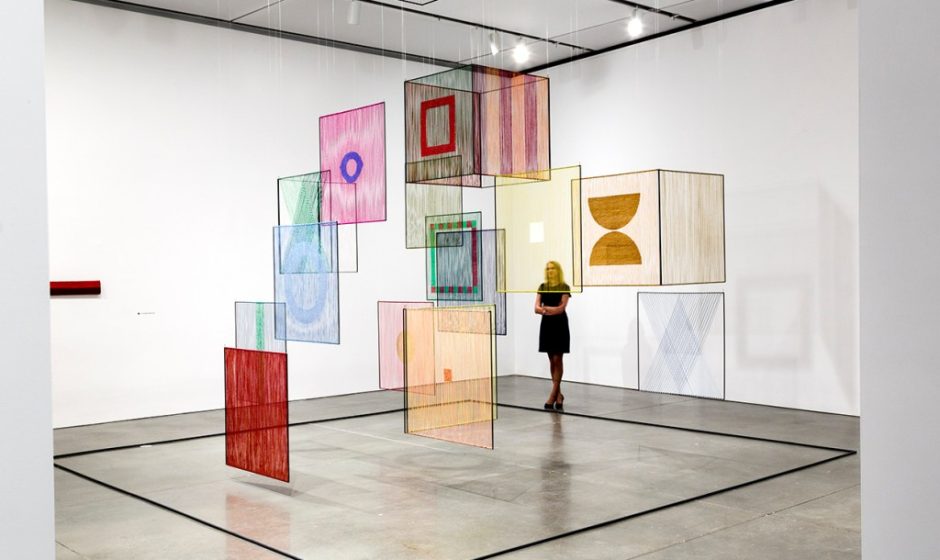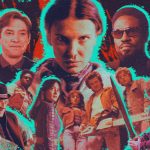Gone for the most part are the -isms that defined artistic movements in the 20th century: Cubism, Surrealism, Fauvism, Abstract Expressionism, Minimalism. Manifestos too are increasingly rare. But artistic movements—or perhaps better, tendencies—have carried on anyway, often formed around conversations and debates over art’s role in society, and in response to ever-changing social and material conditions. Below are nine movements that have defined the 21st century so far.
-
Research-based Art


Image Credit: Courtesy the artist and Amant. Photo: Shark Senesac. Mind maps, study rooms, essay films, and ephemera-filled vitrines are among the most common forms that research-based art takes; this genre is also known somewhat derisively as “biennial art.” Artists, playing academic or journalist, have increasingly taken to nonfiction forms in the 21st century, finding facts via art’s anything-goes mindset over rather than adhere to stifling disciplinary protocols and norms.
Why? Largely, they were troubled by the master narratives offered by scientists, academics, and journalists, as the art historian Claire Bishop has argued. But as authority was increasingly treated with suspicions, faith in facts began to erode altogether; with the internet providing more access to information than ever, everyone became a researcher constructing their own truths. This sensibility has manifested in works ranging from Forensic Architecture’s quest to find occluded truths by alternative channels, Walid Raad’s parodies of authoritative knowledge itself, and Gala Porras-Kim’s advocating the restitution of Mayan objects not to museums but to the gods—thereby questioning whose wisdom is seen as legitimate. —Emily Watlington
-
Social Practice
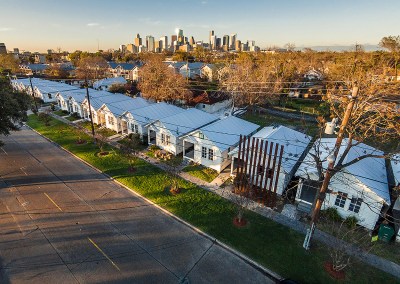

Social practice turned much of the ancillary stuff that surrounds art—discussion programs, community engagement, activism, pedagogy, institutional framing—into an artistic medium. The genre deprioritizes art objects and focuses instead on impact and social change. Examples include work such as Rick Lowe’s Project Row Houses (a restoration and redevelopment initiative in Dallas that started in the 1990s and has expanded ever since), Thomas Hirschhorn’s four-part “Monument” series (comprising outdoor sculptural arrays that doubled as education centers and culminated with Gramsci Monument in the Bronx in 2013), Theaster Gates’s socially minded Rebuild Foundation in Chicago (established in 2010), and Lauren Halsey’s Summaeverythang Community Center in Los Angeles (founded in 2020). Some have critiqued the movement for using art to address problems that art is ill-equipped to solve, while others praise it for enlisting the art world to redistribute wealth and resources in the service of social ambitions and political aims. —Andy Battaglia
-
Digital Photography
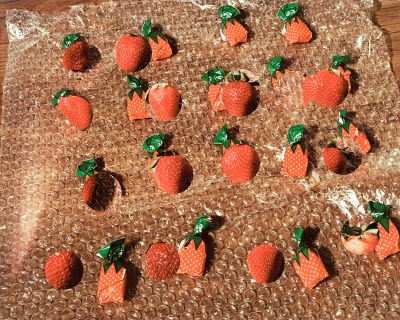

Image Credit: Courtesy the artist Two museum exhibitions in the 2010s—“Ocean of Images: New Photography 2015” at the Museum of Modern Art and the International Center of Photography’s 2013 Triennial—marked the institutional recognition of a cohort of artist-photographers employing digital technologies in their work. The use of digital image editing tools like Photoshop in photo-based art had begun as early as the 1990s, notably in the photographs of Thomas Ruff and Andreas Gursky. But by the 2010s, a rising crop of artists, inheritors of the Düsseldorf School’s ideas regarding photography’s relationship to painting, the Pictures and post-Pictures generations’ appropriation of mass-media imagery, and even Barbara T. Smith’s and Pati Hill’s early experiments with Xerox machines, were addressing the ways in which images are circulated, shared, fragmented, and repurposed on the Internet. Utilizing not only digital software but also robotic cameras, iPads, and other up-to-the minute devices, this younger group—which included Lucas Blalock, Michele Abeles, Seth Price, Trevor Paglen, and Andrea Longacre-White—ushered in a new era in photography. —Anne Doran
-
Post-Internet Art


Image Credit: Deborah Schamoni, Munich The concept behind post-internet art was simple. As Gene McHugh put it in 2009, paraphrasing blog posts by the artist Marisa Olson, it is “art made after one’s use of the internet.” Whether porting the sleek aesthetic of Web 2.0 offline or crafting sculptures and videos that conjured stock photography and Google Street View, the artists involved in this informal movement, from Jon Rafman to Amalia Ulman, went heavy on irony. Signature works appear to relish the nonsense that resulted when screen life leeched into the everyday—and for some, this was a sticking point. The tendency reached its apex with the DIS-curated 2016 Berlin Biennale, which critic Jason Farago memorably torched for its “ultra-slick, ultra-sarcastic” sensibility. That review effectively sealed the fate of a movement that Brian Droitcour had already called “boring to be around” in an Art in America essay. —Alex Greenberger
-
Bio Art
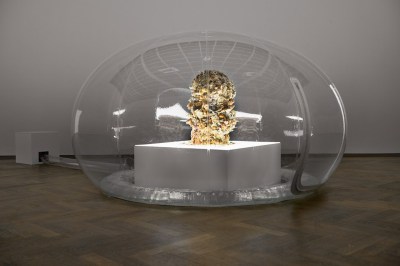

Nature has played various roles in art for most of human history. But this century saw artists intent on collaborating with—rather than dominating—other species, looking for new ways to survive ecosystemic collapse. This was an effort to repair the effects of human dominion over the natural world—the kind of dominance underpinning works by bio artists of the 20th century who played God via synthetic biology (Eduardo Kac), and by earth artists who molded the land to their liking (Michael Heizer). This latest wave of bio artists, whose canon and tenets were charted by the MIT List Visual Arts Center’s 2022 exhibition “Symbionts,” saw Agniezska Kurant collaborate with termites to build sculptures. It saw, too, Anicka Yi swab the cheeks of 100 art world women for a sculpture that offered a feminist critique of the artist as lone genius and a reminder that no organism can live without depending on others. After all, more than half the human body comprises nonhuman cells, of the kind on display in Yi’s vitrine. If interested in preparing for the apocalypse, take note. —Emily Watlington
-
NFTs
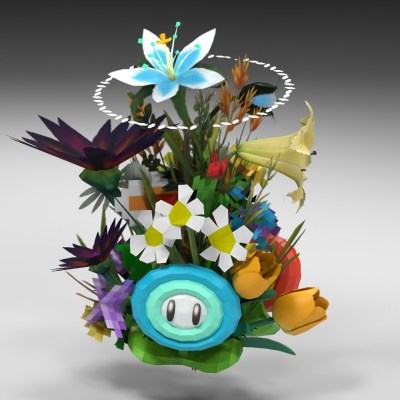

Image Credit: Courtesy the artist and Artwrld. In early 2021, Beeple sold Everydays: The First 5,000 Days at Christie’s for an unprecedented $69.3 million. It was not the first crypto artwork, but its record-breaking sale all but triggered a boom for NFTs—encrypted digital works that are authenticated using blockchain technology and tagged with a unique digital signature. In the end, the impact of the seemingly short-lived crypto art movement may be twofold. First, the vulgar and irreverent visual culture of the internet in the form of Pepe the Frog, Bored Apes, and CryptoPunks became increasingly legitimized, finding its way into the collections of LACMA, the Centre Pompidou, and ICA Miami. Secondly, NFTs created a funding mechanism for a generation of computer-based artists mostly ignored by the traditional art world. With the dust mostly settled, Beeple, Refik Anadol, Snowfro a.k.a. Erik Calederon, and Claire Silver, among others, have become blue-chip names for digital art collectors, even if critical and institutional attention has been tentative at best. Lastly, there were those artists who took the problems and limits crypto offered as a conceptual challenge, as in Jill Magid’s NFTs bouquets of video game flowers, themselves a kind of digital currency. —Harrison Jacobs
-
Figurative Painting
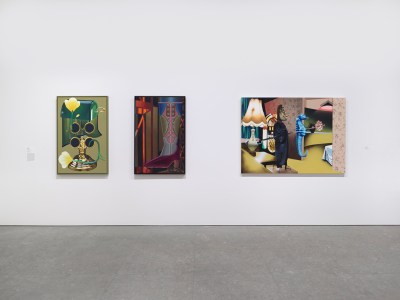

Image Credit: Photo Ronald Amstutz There is no one way to define the avalanche of figurative painting that started in the mid-2010s and has continued ever since. One prominent mode to emerge during this period evinced a very online sensibility via nonsense mashups of memeified imagery. Think the airbrushed canvases of Jamian Juliano-Villani, which put pop cultural imagery through the blender, or the surreal paintings of Emily Mae Smith, in which walking paintbrushes take the place of people in art-historical masterpieces.
In tandem, there was also a flood of less ironic portraiture that meditated on representation itself, with many artists creating images that were intended to afford their subjects dignity previously denied to them. Pointing to the example of Jordan Casteel, who paints striking images of working class Black men, women, and children, Christina Quarles once told the New York Times that queer artists and people of color “can now be author of their own stories.” (Quarles, who identifies as queer and paints bodies that split apart and multiply, said her own work is an entirely different type of figuration.)
Where did all this figuration come from? Critic Barry Schwabsky traced the beginnings of the meme-y kind of figuration to the 2015 edition of MoMA PS1’s Greater New York quinquennial and noted that all this painting emerged in response to the “zombie formalist” abstraction craze of the early 2010s. But the genesis of other types of figurative painting has proven more elusive, which may explain why there have followed blockbuster museum shows devoted to the subject—most notably “When We See Us: A Century of Black Figuration in Painting,” which first appeared at the Zeitz Museum of Contemporary Art in Cape Town in 2022. These shows have tended to raise debate about how successful all this figuration has really been. In the case of “When We See Us,” Nkgopoleng Moloi remarked that the show evinced a sense of “optimism” about representation that “reflects the need to expand the language of Black art and to reassess the limits of figurative painting.” —Alex Greenberger
-
Artificial Intelligence Art


Image Credit: ©Trevor Paglen, courtesy of Altman Siegel, San Francisco and Pace Gallery AI art, generative art, algorithmic art—this most recent synthesis of art and tech goes by many names, and takes even more approaches. Some artists bend software like Midjourney or DALL-E toward social critique, while others build their own machine-learning algorithms to synthesize and make legible vast quantities of data. Still others don’t use AI at all in their practice, but rather take the technology, and underlying philosophies like transhumanism or techno-optimism, as their works’ subject. AI art is less united by aesthetics than a recurring set of thematic concerns: questions about bias; our shifting understandings of authorship, influence, and collective creativity; and the hyper-capitalist ethos that underlies it all. Harold Cohen’s AARON computer from 1973 and Vera Molnar’s computer drawings from the 1960s are often figured as a precursor, with Hito Steyerl, Trevor Paglen, Anicka Yi, and Refik Anadol being just a few of the contemporary artists to have fixed their sights on AI. This movement is very much evolving with and through the development of AI, and with hundreds of billions being poured into the technology globally, it is all but assured that artists will be exploring it for decades to come. —Harrison Jacobs
-
Fiber Art
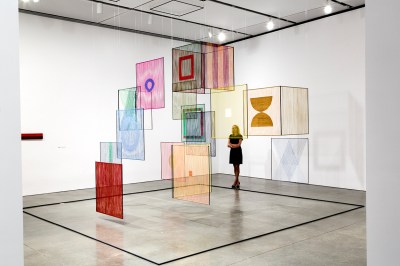

Image Credit: Photo John Kennard “Abstract weavings, knotted sculptures, expressive basketry, shaggy wall hangings: all are coming out of artists’ studios and museum storerooms, lending much-needed warmth and complexity to exhibition spaces.” So wrote Glenn Adamson in a piece last year—the year of, as he put it, “the art world’s high fiber diet.” Though the movement had an earlier institutional heyday in the 1960s and ’70s (not to mention that humans have been making it far longer), fiber art rose to its current status around appreciation for artists like Anni Albers, Magdalena Abakanowicz, and Sheila Hicks, as well as landmark exhibitions like “Fiber Sculpture 1960-Present” at the ICA Boston in 2014 and “Foreigners Everywhere,” which gave textile art a prominent showing in the 2024 Venice Biennale. As renown and respect increased, the rise of fiber art helped shed light on the ways that the privileging of painting over other mediums worked to marginalize work associated with women and nonwestern cultures. —Andy Battaglia
